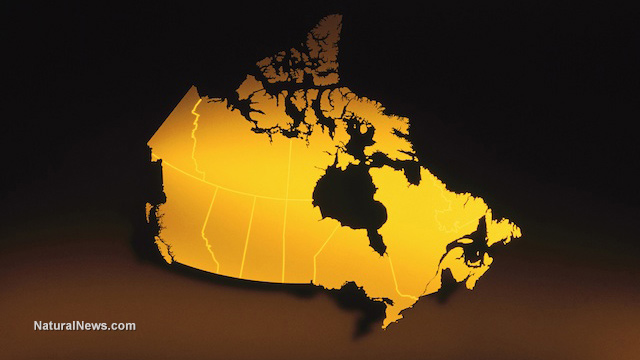http://www.naturalnews.com/051337_Fukushima_cesium-137_nuclear_power.html


Radioactive cesium-137 from Fukushima now detected off coast of Canada
Tags: Fukushima, cesium-137, nuclear power
“Radioactivity can be dangerous, and we should be carefully monitoring the oceans after what is certainly the largest accidental release of radioactive contaminants to the oceans in history,” researcher Ken Buesseler said.
In March 2011, a massive earthquake and tsunami caused three separate nuclear meltdowns at Japans’ Fukushima Daiichi nuclear power plant. The explosion ejected massive amounts of radioactive material into the air, much of which ended up in the Pacific Ocean.
Findings “expected”
Among the radioactive elements released during the Fukushima disaster were cesium-134 and cesium-137, both of which occur on earth only as a result of human activity. Because of its long half life, much of the cesium-137 detected in the environment actually originates with nuclear tests conducted decades ago. Cesium-134, in contrast, has a half-life of only two years. That means any cesium-134 in the environment (especially when detected at large distances from likely sources of nuclear contamination, such as power plants, dumps or weapons factories) stems from the Fukushima meltdowns.
The Woods Hole researchers tested water samples collected on February 19 from various locations off the coast of Ucluelet, British Columbia, a small town on Vancouver Island. They detected cesium-134 at levels of 1.4 Becquerels per cubic meter, and cesium-137 at levels of 5.8 Becquerels per cubic meter.
A Becquerel is a unit of radioactivity. Shortly after the Fukushima meltdowns, Japanese coastal waters tested at 50 million Becquerels per cubic meter.
According to Canada’s Department of Fisheries and Oceans, the Pacific Ocean typically contains cesium-137 levels of “only” about one Becquerel per cubic meter, making the levels near Ucluelet nearly six times higher.
In November 2014, another Woods Hole study found radioactive elements from Fukushima about 100 miles off the California coast. Until now, that was the closest the contamination had traveled to North American shores.
The new findings are “kind of to be expected,” Buesseler said. “We knew four years later it would be reaching our shoreline, and we had seen it offshore.”
Levels likely to get worse
The researchers insisted that the levels detected so far are not high enough to be particularly dangerous to humans or marine life. “As an example, even if they were twice as high and I was to swim there every day for an entire year, the dose I would be exposed to is a thousand times less than a single dental X-ray,” Buesseler said.
“So the risk [from radiation exposure] is never zero, but when I think of health risk, I always think of the Japanese side of the Pacific instead of ours.”
Radioactive cesium from the Fukushima disaster is likely to keep arriving at the North American coast, he said. “Predicting the spread of radiation becomes more complex the closer it gets to the coast.”
According to a 2013 study by the Nansen Environmental and Remote Sensing Center in Norway, the main part of the radioactive ocean plume from the Fukushima disaster is likely to hit the North American west coast in 2017, with maximum concentrations of radioactivity arriving in 2018. The model showed the bulk of the radioactive material from the disaster remaining concentrated along the North American coast at least through 2026.
Meanwhile, radioactive material continues to pour into the sea by the Fukushima plant. According to Tokyo Electric Power Company (TEPCO), at least 2 trillion Becquerels worth entered the Pacific just between August 2013 and May 2014.
In addition, TEPCO has deliberately released even more radioactive material into the ocean, in an attempt to slow the rate at which radioactive water builds up on the Fukushima site.
(Natural News Science)
Learn more:http://www.naturalnews.com/051337_Fukushima_cesium-137_nuclear_power.html#ixzz3nuDVQ85C





